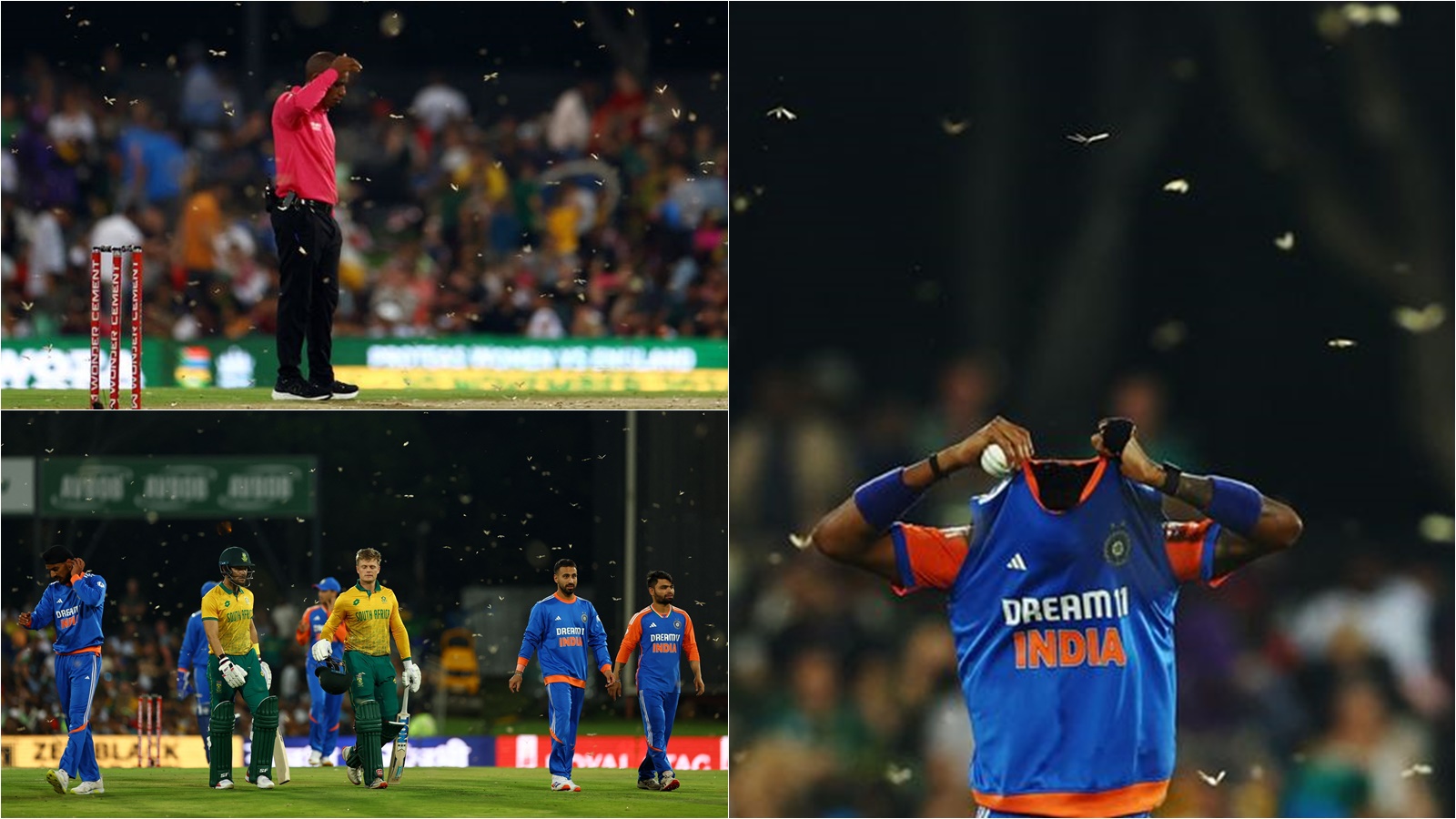
When diaphanous winged white ants swarmed the SuperSport Park at Centurion, it caused an interruption and got added to the bizarre reasons for stopping the bat-ball game.
But the swarming ‘white ants’ or ‘flying ants’ are in fact highly evolved flying African subterranean termites, and what the cricket world witnessed was the formation of new colonies, with the king, queen, winged reproductives and soldier ants, all causing a tiny annoyance and delay to the human sport of cricket.
The deepest information about flying ants, is expectedly, available with pest-control companies of Guateng province where they routinely swarm.
What brought flying ants to the cricket?
The floodlights of course. But the occurrence was ‘swarming’ – when the termites fly into the air to create new colonies. After swarming, their wings drop off and they pair up to mate with the hope of starting a new colony under the soil, according to Servicemaster.co.za. At homes in Guateng, they are vacuumed out by pest control professionals. “These insects are gathered at the beginning of the rainy season in West, Central, and South Africa when they typically swarm,” writes the blog
Hillsofafrica.com.
Where were the flying ants chilling before they ran headlong into Indian fielders affecting visibility?
Servicemaster.co.za quotes entomologists, explaining how this species has superior intelligence – as “phenomenal engineers. Mounds are constructed with cooling air vents perfectly positioned to ventilate a colony of insects which could easily consist of 250 000 individuals or several million. Vents are opened or shut according to wind direction and firmly plugged well before the onset of heavy rains. The queen will live up to 30 years and workers average a 5 year lifespan.”
What are flying ants colonies like?
“Termites have a strict caste system, which consists of worker termites, soldiers, winged termites or reproductive, a queen termite, and a king termite,” the pest control site says. “The most common type of termites in Gauteng is the “flying termite” or “winged reproductive”. These winged termites are new kings and queens attempting to establish a new colony. These are commonly seen flying around in their thousands after and during summer rains,” the pest control guide says. The roles offer upward Mobility as colony building season approaches.
Can they harm or bite humans trying to play cricket?
No, they aren’t really interested in biting humans. However, according to the Hillsofafrica.com blog, winged termites themselves are a valuable source of protein and fat. In fact, the termites are a considerably higher source of protein than their equivalent weight in rump steak. “Termites are collected when they take flight during migration. Different communities have different methods of collecting and sometimes cultivating termites. The queen is a little harder to acquire, but is widely regarded as a true delicacy. Traditionally, they are a much-anticipated treat at the beginning of the rainy season because the new crops have not yet produced food, the livestock is lean, and the supplies from the previous season are running low.”
The recipe goes thus: “Typically, the termites are washed and prepared by removing the wings. Next they are added to a pan and covered with a small amount of boiling water. They are cooked until the water is evaporated and then butter, ghee, or oil is added to the pan and the termites are fried for a few minutes. Then, they are ready to eat.”



